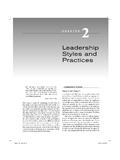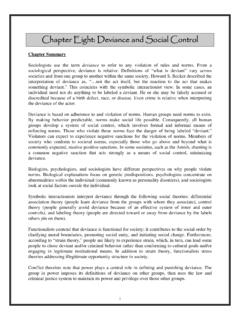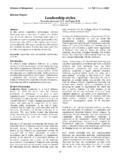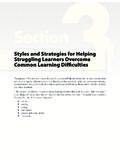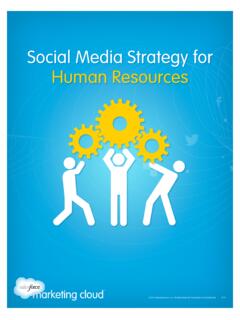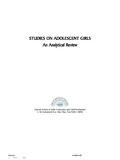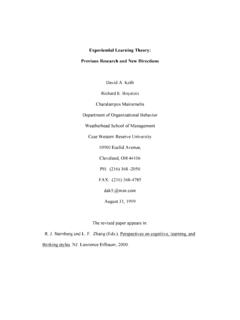Transcription of QAPI Leadership Rounding Guide - Centers for Medicare ...
1 Disclaimer: Use of this tool is not mandated by CMS, nor does its completion ensure regulatory compliance. Directions: Leadership Rounding is a process where leaders ( , administrator, department heads, and nurse managers) are out in the building with staff and residents, talking with them directly about care and services provided in the organization including QAPI initiatives. Rounding with staff and residents is an effective method for leaders to hear firsthand what is going well and what issues need to be addressed within the organization. It serves as an important signal of Leadership s commitment to performance improvement, and promotes a culture of QAPI in the organization.
2 Use this to Guide your rounds to monitor the progress of QAPI initiatives. Questions to Consider Before Rounding 1. Which leader(s) will conduct rounds? 2. How frequently will rounds take place? 3. What questions do you want to ask? What do you want to learn? (See sample questions below.) 4. What barriers/issues have already been identified that employees should be asked about in order to gather input on solutions? Rounding 1. Leaders conduct rounds as planned, maintaining a positive tone, building relationships with staff by taking the time to listen and respond to employees and residents needs.
3 2. Ask questions and document key points. See optional Rounding form below. 3. When employees raise issues or ask for help, assure them you will follow up. 4. Follow up on previous issues or requests share with staff how the issues were addressed or resolved. To Do After Rounding 1. Identify frequently noted issues/themes. 2. Prioritize issues ( , by level of urgency, threat, ability to resolve). 3. Conduct follow-up to show responsiveness to the issues raised (note: this may involve following up with employees individually, developing an organizational report that outlines the input collected and proposed solutions potentially utilizing the priority levels developed in step #2 or including the findings as a component to be communicated during the next Rounding session).
4 4. Consider ways to acknowledge outstanding employee/unit efforts ( , thank you notes or other rewards/recognition). 5. Identify training or coaching opportunities for employees/units. Plan next Rounding session. QAPI Leadership Rounding Guide Disclaimer: Use of this tool is not mandated by CMS, nor does its completion ensure regulatory compliance. Rounding Form PERSON CONDUCTING ROUNDS: DATE: UNIT(S): BACKGROUND: (to be completed prior to Rounding ) TOPIC ___Specific PIP(s): ___Specific aspect of care ( , bathing, medication reconciliation) ___Specific work place or workflow issue ___Other Information needed prior to Rounding : What is your organization trying to achieve?
5 How will improvement be recognized? Current data or description of performance: Improvements made to-date: BARRIERS/ISSUES ALREADY KNOWN: (sharing these may be an opportunity to ask for staff input on solutions) PREVIOUS BARRIERS/ISSUES THAT HAVE BEEN ADDRESSED BY Leadership : (reporting these back to staff shows responsiveness) Questions for leaders to ask staff (include any qualitative and quantitative information obtained). What things are going well around this initiative or this aspect of care or service? What evidence do you see of success? Notes: What is frustrating you with the work around this initiative or this aspect of care or service?
6 What barriers/issues do you see threatening this initiative or aspect of care or service? How should they be addressed? Notes: Disclaimer: Use of this tool is not mandated by CMS, nor does its completion ensure regulatory compliance. What additional resources/tools/equipment are needed? Notes: Are there any colleagues who deserve special recognition for their efforts on this initiative or this aspect of care or service? Notes: Are there any colleagues who could be helped through coaching/training to make this initiative or aspect of care or service more successful?
7 Notes: What feedback, if any, have you heard from residents and families about changes taking place as part of this initiative or this aspect of care or service? Notes: What else would you like the Leadership to know about this initiative or this aspect of care or service? Notes: Leaders summarize notes from conversations you had with residents or families on this topic.










